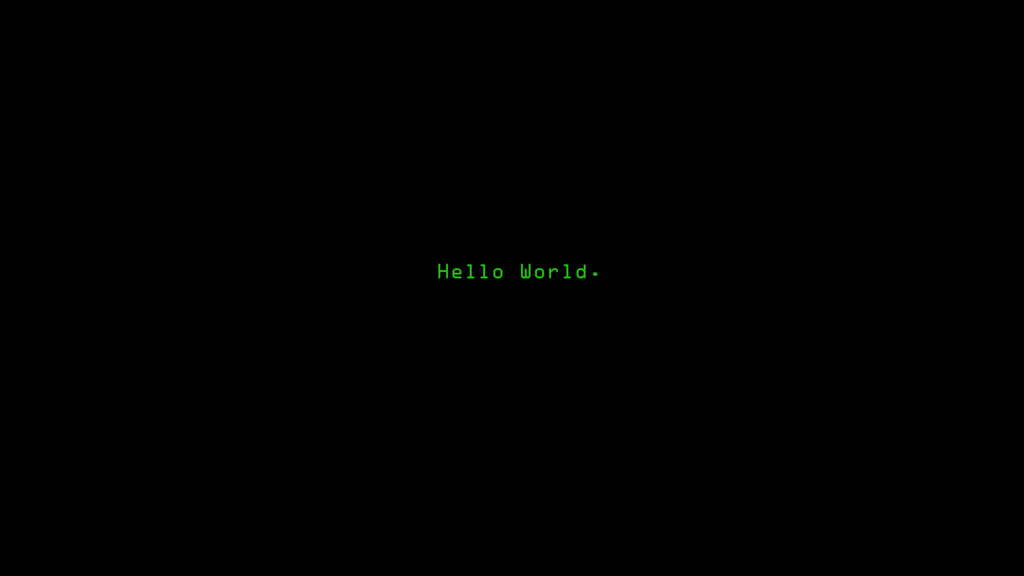Ubuntu is just getting worse and worse. I was pretty happy running Ubuntu server for years after moving from Gentoo; I jag lost interest in spending time taking care for that server and wanted something easy.
I went to Debian half a year ago and it’s been great. Should’ve done it earlier.
I gave up Ubuntu when they switched Firefox to a snap
I gave up Ubuntu when they switched to the Unity desktop. ugh!
Yup, that was a whole kerfuffle. That is what got me to stop installing Ubuntu.
I never understood why people run Ubuntu on servers. It’s madness. Ubuntu is a fork of unstable Debian packages. You don’t want unstable on your server!
Ubuntu on Desktop I can understand. Back in the days the Debian release was really long so much software was a tad outdated after a couple of years. But Debian had a much faster release cycle now, and had pretty much incorporated all the good stuff from Ubuntu and left the bad behind.
Ubuntu is a fork of unstable Debian packages. You don’t want unstable on your server!
Unstable does not mean crashes all the time. What makes them unstable on Debian is they can change and break API completely. But guess what, Ubuntu freezes the versions for their release and maintains their own security patches, completely mitigating that issue.
There are other reasons you might not want to use Ubuntu on a server but package version stability is not one of them.
Ubuntu is a fork of unstable Debian packages
And where do you think debian stable packages come from exactly ?..
it’s basicaly the exact same thing. In both case :
- At some point freeze unstable (snapshot unstable in case of ubuntu),
- fix bugs found in the frozen set of packages,
- release as stable.
We should be clear on our terminology here. Debian Unstable is called that because the package “versions” are not stable ( change ). It is not really a comment on quality although more frequent change also implies more opportunities for issues to be introduced. In Unstable, Debian may introduce disruptive changes either to configuration or even to the package library itself.
Regardless, taking a snapshot of Debian unstable and then separately supporting those packages completely eliminates these issues. That is what Ubuntu does.
Ubuntu LTS now offers up to 10 years of support without having to upgrade a release. This is far more “stable” than anything in Debian, including of course “Debian Stsble”. In fact, it exceeds the stability of Red Hat Enterprise.
I have not used Ubuntu in many years but I have been considering using it again for some server use cases precisely because it is now so “stable”. I still do not like Ubuntu on the desktop and do not like snaps in particular. I do not think snaps impact any of the server packages I would use though and I do not expect Canonical to introduce them during the support lifetime of a particular release.
For personal use, the 10 years of support is entirely free. That is pretty compelling.
Ubuntu on Desktop I can understand.
Not anymore. A whole extra, unneeded, proprietary, locked-in package system. Ads in the default install.
There’s Mint, Pop!, and plenty of other options that actually respect the user.
Definitely. But back in the day it was good for desktops. Ubuntu has never been good for servers.
Why?
It was awesome back when during the install you could just select “LAMP”, and a full stack web server suite would be automatically set up and configured correctly out of the box. But those days are long gone.
A lot of distributions do that. OpenSuSE does that. And at least it’s the kind of industrial rated system that will just keep chugging along no matter what you throw at it.
Yeah now they do. Back in the early 2000s, I only remember Ubuntu having just a single option to install everything needed to be up and running on first boot. Everything else needed some tweaking of configs and quite a bit of domain knowledge to get started at the time. It’s what jumpstarted me into PHP development.
sudo tasksel lamp?
Mhm I have Ubuntu LTS on my server because my VPS provider provided me with it. :/
You don’t want unstable on your server!
“But they are maintaiend for 5 years!”
I feel that.
Three years ago I moved to fedora and RHEL based distros like Rocky for my devices and servers because I’ve gotten suck of Canonical’s shit. Don’t regret it.
I’m personally interested in Rocky Linux (for servers)
I get it.
I don’t love Snaps either.
However, a thing I try to remember and wish others would as well is simply this: Canonical is a company. Their goal is to make money. They are not out to create the ultimate free as in freedom Linux distribution.
This does (to my mind) not make them evil, and ESPECIALLY doesn’t make the folks who work there evil. It makes them participants in the great horrible game that is Capitalism, and expecting anything else from them is going to lead to heartache, as you’ve seen.
If you want a Linux distro that shares your preferences and won’t try to jam snaps down your throat, you might consider giving Debian a whirl as many others have.
Continuing to ride the Ubuntu train and raging against the dying of the light when it continues chugging in the direction it’s been headed for YEARS seems … futile :)
Agreed.
For any (k)ubuntu refugees, do as I did and switch to Debian!
Or as I did and switch to fedora! (Debian’s also a really good option)
Nice to see that KDE is so well supported! I’d been running Manjaro KDE the last time I had Linux installed on my desktop but I may give Debian a try this time around.
How do snaps make money for Canonical?
There’s no way to install a snap except through Canonical’s snap store (or snap store proxy, which gets them from Canonical’s snap store).
They’re charging for kernel security live patches. They charge for LTS. If they get enough buy-in re: snaps, they’re going to do the only thing a for-profit company can do.Red Hat and SUSE also charge for extended support, it’s literally the only fucking way to make money off of a distro
Canonical still offers 5 years standard at the enormous cost of 0.0$
Are you under the impression that they write all the patches?
No, but they actually do write some patches and they also do all the menial work, testing and verification to keep a piece of software serviceable for 10 years
If you think it’s easy, go and attempt it yourself. The greatest cure for people talking shit about needed effort, according to my experience…
I’m not gonna speak for Canonical but snaps enable commercial vendors to more readily ship their apps on the Ubuntu platform.
Money is literally the very incarnation of evil via the Talisman it bears.
If they trying to make money then they are, not a fiber of otherwise, Evil.
You’re decision to not recognize the blatant & obvious Talisman does not make you correct. It’s not your choice. It’s the choice of that occult chant and signature.
Humans are inherently evil. There is but a thin veneer we call “civilization” that stops of from beating each other to death with whatever object can be brought to hand.
And what does any of this have to do with the price of tea in China? :)
I dunno, what does it have to do with the price of tea in China?
It’s astonishing.
Fedora introduced a whole new distro where you can’t install anything with dnf anymore and people love it. People love using flatpaks instead (yes I know of all the shortcomings, but you can always choose another install method for that broken package). And ubuntu users just hate ubuntu for what they do. The difference may also be that fedora gives a choice to the user and does not directly force it
deleted by creator
Mir is not a good example of distro engineering, because it’s an extreme case of NIH syndrome. Unlike what it is today, the original Mir was an alternative to Wayland.
The story started when Canonical decided that X isn’t good enough and they needed an alternative. They chose Wayland first, exciting the entire Linux desktop community. But then they dropped Wayland in favor of the new in-house Mir project, citing several drawbacks to Wayland. The Wayland community responded with several articles explaining why Canonicals concerns were unwarranted. But in typical Canonical style, they simply neglected all the replies and stuck with Mir.
This irked the entire Linux community who promised to promote Wayland and not support Mir at all. This continued for a while until Canonical realized their mistake late, like always. Then they repurposed Mir as a Wayland compositor.
Now this is a repeating story. You see this with Flatpak vs Snap, Incus vs LXD, etc. The amount of high handedness we see from Canonical is incredible.
FYI my understanding is that Incus is forked from LXD, because nobody trusts Canonical any longer. I don’t think LXD itself is them doing the thing that makes them untrustworthy.
You might be referring to something they have done since then, apologies if I misunderstood. Wouldn’t be surprised if they tried to make it a Snap or force Snaps into it.
LXD was under the Linux containers project earlier. After the Canonical takeover of LXD, the following changes were made:
- The repo privileges of the original LXD developers were revoked. Those developers are driving the development of Incus now.
- LXD’s license was changed to AGPL+CLA
The first point means that Incus is the true successor of the original LXD. The current LXD is a jealously guarded pet project of Canonical in the same manner as Snap and Mir.
As for the second point, I’m usually a proponent of AGPL. But CLA corrupts it so much that it’s more harmful than with a permissive license. The real intention of this license change is to prevent Incus from incorporating changes from LXD (since the copyleft license of LXD code is incompatible with the permissive license of Incus). Meanwhile LXD continues to incorporate changes from Incus, although the Incus developers haven’t signed any CLA. This move by Canonical is in very bad faith, IMO.
So yes - I consider LXD to be untrustworthy. But that doesn’t cover the old LXD code, its developers or its community. Those transformed fully into the Incus project the same way OpenOffice was forked into LibreOffice. And I don’t trust the LXD name anymore in the same way nobody trusted the OpenOffice name after the fork (before it was donated to the Apache foundation).
Oh, yep, that’s shady and bad behavior. Thank you.
@babara@lemmy.ml
The difference with Fedora Atomic, which I think you refer to, is that it’s totally open. For example, people started using the OCI containers differently than Fedora intended, which resulted in uBlue and stuff like Bazzite.Also, no one forces you to use Flatpak. You can still use Distrobox and use Pacman/ APT/ DNF/ whatever you prefer and export your apps that way. It’s just that Flatpak “won” and doesn’t have many drawbacks, and is very convenient. I mostly like them.
And, most importantly, Fedora is the fronteer of innovation.
There were many projects and ideas that failed, but many more succedded (Wayland, image based distros, etc.), and Project Atomic is just one more “testing ground” that is well thought out imo. Therefore people are expecting to “test out” new generation Linux stuff, it’s just part of Fedora. If you don’t like that, use Debian instead.I can recommend you to give Fedora Atomic a chance, it’s an extremely nice family of distros (e.g. Bluefin/ Aurora, Bazzite, etc.)!
Edit: one more thing is that Fedora is, in contrast to Ubuntu, not controlled by a company. RedHat doesn’t have nearly as much influence as people think, it’s mainly community driven, and therefore choices aren’t (in theory) influenced by $$$
And, most importantly, Fedora is the fronteer of innovation.
What I find impressive about this is that they turn this into a stable product. Early Fedora Core was more of an experimental distribution but those times are long gone (IIRC around Fedora 19).
Fedora Atomic a chance, it’s an extremely nice family of distros (e.g. Bluefin/ Aurora, Bazzite, etc.)!
Can you elaborate on this? I landed on nix for my PC turned server and haven’t regretted it, but I’ve been hesitant to go all in on my main laptop (I’m wary of my laptop iGPU and GPU switching becoming a config issue, and I’m dreading having to configure my wsl dev environments again…)
Windows is getting blatantly terrible enough I know I’m just putting it off, maybe a cool new technology might help make it sound more fun
I don’t know what I should say tbh 😅
For the start, you can read my post about image based distros: https://feddit.de/post/8234416Imo, Fedora Atomic is NixOS made easy. You can go to the uBlue-builder and modify a custom image if you’re a tinkerer.
NixOS is down-to-top (local config file that defines your host), while uBlue is top-to-bottom (you modify an image, image gets built on GitHub and then shipped to you).
This allows you to fork or create an existing “distro” without having to maintain a whole distro yourself.Other than that, especially uBlue is extremely user friendly imo.
- It updates itself in the background, updates get staged and applied after you’ve shut down your PC in the evening.
- You can rebase anytime you want to another flavor, e.g. I switched to KDE 6 from Gnome after it came out.
- You have to use containers for everything (mostly Flatpak, but also Distrobox or Nix)
- It’s ultra low maintenance and even more reliable, you can boot into an old image if a new update broke anything or made something buggy
- For a casual user, not distinguishable from regular Fedora
- And much more
I love nothing else more.
Ok, when I googled it earlier I saw “containers and roll back to previous version” and I made a note to do more reading
Your write up was good, much clearer than what’s on fedora and Wikipedia. And the fact you pitched immutable OS’s in general first caught my attention… The concept is a no brainer. Decouple the os and the rest of the software, and don’t bother digging into one of a kind conflicts when updating things - just make it rebuildable and create it fresh. You never know when the wrong bit will flip
Nix’s “learn this one thing, configure it once, and you’re done” stuck in my head. And after a different distros, a couple lines installed Nvidia, Nvidia’s docker package and docker
But then I had to configure WiFi and spend half an hour learning why I couldn’t mount an external drive and how to manage it… I still have no regrets, I’ve got a USB that should start converting my friends and family’s old PCs into a self organizing AI/self hosting cluster… Hopefully it works next month lol
But not what I want in a daily driver. I want something that’ll quickly do what I tell it and gracefully handle the fact I have 6 versions of Java and no idea why I need a version from 2018 specifically. And that I’m going to add a repo to install something and instantly forget what I did if it seems like the best path forward at the time
You’ve sold that pretty well - my takeaway was that atomic fedora is very modular and low side effect and also an interchangable foundation I can swap out and roll back easily… At this point, if it can run containers and the drivers I need, it sounds like a great option.
I used to use VMs so every 6-12 months I could start clean with the latest and run setup scripts for my dependencies… It was just easier than debugging some conflict. This sounds even cleaner - I swap out the base at will, and the stuff I’ve built on it should stay intact. Plus it sounds much more testable
So my main concern is will it run on an HP omen - it has zero Linux support and a bunch of concerning driver needs, but it does have a second m2 slot… What’s the worst that can happen? Except apparently some models forget they have fans in Linux and I just know the iGPU-GPU switch will cause some problem with sleeping… But Windows is only going to get worse
Now that you’ve convinced me this might be the best course (I only see less problems than other distros would have), and I’ve talked myself into giving it a go, is there any recommended reading or key concepts I should look into? Any particular flavor(s) you’d point me to first?
Now that you’ve convinced me this might be the best course (I only see less problems than other distros would have)
Sometimes, software, especially install scripts for something, are less common for Silverblue, but executing those is very risky anyway and I never felt the need for it.
And, as I said, some things just work differently. But NixOS is one million times worse than that in that regard, so don’t worry about it. You shouldn’t have many issues.
any recommended reading or key concepts I should look into? Any particular flavor(s) you’d point me to first?
I don’t know. In my opinion, my post should cover most stuff concepts and differences.
Don’t worry about it, you’ll use Flatpak anyway most of the time, and it updates itself automatically, so the package manager (rpm-ostree) doesn’t matter much for you.
You can still use your prefered package manager (apt, dnf, etc.) in Distrobox.Other than that, just don’t worry and use your laptop for whatever you want to do.
And about flavor choice, there are a few options:
- Bazzite is mainly if you game a lot
- Bluefin and Aurora are the same, just in Gnome or KDE. It’s basically Bazzite without gaming stuff
- Secureblue, which features security hardening tweaks
- Wayblue, which is with River, Wayland, and more
- And of course all different DE-spins, e.g. Sway, Budgie, etc.
Just go to the uBlue homepage and see for yourself what appeals to you :)
Well hey listen, I appreciate it. I would’ve spent who knows how long waffling between distos that I don’t feel drawn to, and even if I came across an atomic flavor, I probably would’ve just assumed it was marketing fluff
Good ideas need advocates, and this is a good idea… It’s a promise of an OS I want, not just running from one I don’t
I’m probably going to look at bazzite first. If I have containers that can run LLMs on my GPU, that checks off everything on my wish list except gaming. I’ll read up on it though, you’ve given me the context I need to care about learning more
It is absolutely a different situation if it is opt-in. If Ubuntu made Snaps opt-in, people might not like them but it’d be a minor critique instead of fleeing the distro.
Well there is immutable, which you probably refer to with Fedoras new distro, and then there is Canonical pushing their shitty snap format, and kinda non-sideloading. Can’t wait for the day when apt only ever allows to install snap packages.
Fedora Silverblue is in an entirely different ball game. You can’t use dnf because it’s an immutable image based system where you can’t make direct changes to the Root system without making use of the rpm-ostree & VCS mechanisms. You’re making a conscious choice by using Fedora Silverblue, and the pros out way the cons for most people making that choice.
In contrast Fedora Workstation allows you to use dnf just as normal because it’s not an immutable image based system.
Ubuntu doesn’t make use of any such system so their reliance on containerized user-space apps isn’t a technical one.People love using flatpaks instead (yes I know of all the shortcomings, but you can always choose another install method for that broken package).
Not on Ubuntu nor Fedora, but yes: If a “larger” package breaks on update and there is no fix available and I use that application on a pretty much daily basis, then I remove it and install the Flatpak variant.
Flatpaks are slower, do not work super well with Wayland (especially scaling, some applications have GIANT text, some have 5 pixels large text, but fortunately I was able to circumvent those issues for most applications I use via Flatpak), and you need to run another system for updates and updates are friggin slow.
There is also this monstrosity ...
It is not fault-proof and it throws an error if there no older drivers, but this prevents accumulation of outdated Nvidia driver packages (at one point I had nearly 30 different variants installed, resulting of a couple of gigabytes of unused drivers that are “updated” every time I ran
flatpak update).flatpak-update () { LATEST_NVIDIA=$(flatpak list | grep "GL.nvidia" | cut -f2 | cut -d '.' -f5) flatpak update flatpak remove --unused --delete-data flatpak list | grep org.freedesktop.Platform.GL32.nvidia- | cut -f2 | grep -v "$LATEST_NVIDIA" | xargs -o flatpak uninstall flatpak repair flatpak update }
On the other hand, the applications provided via Flatpak just work.
And messing with 32 bits multilib dependency hell for Steam or installing pretty much half of Kde just for Kdenlive simply isn’t something I want.
I think they got the nvidia driver accumulation thing straightened out. On Fedora 40, I had it automatically remove a bunch of older versions and now it only lists the 64 and 32 bit versions I expect it to.
$ flatpak list | grep nvidia nvidia-550-76 org.freedesktop.Platform.GL.nvidia-550-76 1.4 system nvidia-550-76 org.freedesktop.Platform.GL32.nvidia-550-76 1.4 systemEdit: looks like it’s fixed by this.
I think you have a typo in your last paragraph.
Flatpak should run better on Wayland compared to Snaps. Not to mention Flatpak has much better XDG Portal Integration.Should.
Right. I just installed OpenSUSE MicroOS to try out, and it’s the same idea. I agree with some of the anti-snap rhetoric. Closed, Canonical-centric system for profit; linking placeholder debs to download a snap. But the philosophy of all user applications come as chunky but robust packages that (almost) don’t interfere with each other and the system - I think that might be the future for safer computing for non-technical users.
Ubuntu has long suffered from NIH syndrome, constantly inventing its own non-standard components (snaps, Unity, etc) and trying to make them “win” by forcing them on their own users. Reminds me of Microsoft with its non-standard Internet Explorer, its own non-standard version of Java and others.
The lesson is to use a Community distro, not a Corporate distro. When the distro’s goals align with its community’s, even a distro based on Ubuntu will usually be better than straight Ubuntu. For example Mint keeps the good things about Ubuntu (in Mint’s opinion of course), removes the bad things like Snaps, and adds other features that the community wants that Ubuntu won’t (like built-in Flatpak support among other things).
The lesson is to use a Community distro, not a Corporate distro.
Okay, but you don’t see these kinds of complaints with Fedora or SUSE. While I don’t necessarily disagree with your core point (community is better), this doesn’t seem like an issue with corporations so much as an issue strictly with Canonical.
Been running KDE on fedora for the last 6 years after giving up on everything Ubuntu based back then. Haven’t thought to look elsewhere since as its been just fine
I went through something similar 2 years ago. I was sold in PopOS, mainly because Debian based distros were easier to find help for. Almost 2 years ago I started using Fedora on my PC while still having PopOS on my laptop. Within 3 weeks I was setting my laptop up with Fedora as well, and I’ve never looked back (other than the regular distro-hopping bursts, lol).
It has been very good & stable over the last few years. I switched because kbuntus ancient kernel caused me issues so I needed something more current, and its worked ever since so I never looked elsewhere. Running Linux isn’t a hobby for me, these are my work systems, so I don’t hop without a push.
Edit: I’ve just rolled out fedora 40 and plasma 6 is running great
Yeah, I get you. My PC is for work, and my laptop can be used for work, but it’s mostly my gaming rig (together with my Steam Deck), and my distro-hopping unit as well.
I used Fedora 40 with KDE 6 since the Beta, but KDE and I just don’t get along, so I’m on Gnome 46 on both devices now.
One of the huge advantages on Linux is that you can be back in business in 20 minutes if you choose to try another distro. Similar to Windows and Mac, said Noone ever 🤣🤣
You’re being purposefully obtuse. Corporate distro means “by and for companies” which rolling releases are not
Okay? OpenSUSE Leap is a point release by and for companies. While Fedora isn’t necessarily a server distro, it IS a point release designed with enterprise use in mind.
If we look at both of their strictly enterprise counterparts, I’ve never heard of any complaints about SUSE and any complaints with RHEL I’ve heard are with source availability. Neither of them have the mega amounts of bad publicity of Canonical.
This is why I moved to Linux Mint. Then, when I got tired of having to reinstall the entire OS every time there’s a new version I moved again. Spare a thought for the poor saps who feel stuck with an OS from a single vendor. And sometimes even paying for the privilege. That being said fund open source. Freedom isn’t free.
Mint has an auto-upgrade tool so you don’t have to reinstall each time. It used to be only for minor version upgrades but now you can auto-upgrade to a new major version as well. In any case there are plenty of great distros to choose from.
And yes! whatever distro (and other FLOSS software) you use, support them with a donation if you can! When you consider the value you are getting for free vs. what you’d be spending on proprietary software, it’s not so hard to do and feels good too.
Also… the amount of money I’ve saved by being able to revive old hardware! I haven’t bought a new computer in 11 years. My computer before that (and still working) was a gift in 2006… that removed is old enough to vote.
I have other computers that people have given to me because they were “just too old,” but for me, it was an upgrade. I revived a windows 98-era HP a few years ago, just so I could use the 9-pin connection to fix my bricked OG Xbox that I was modding.
Granted, I don’t game on PC or require heavy lifting (though I am saving for a personal build, because there’s some hobbies I just can’t do without a good desktop), but for everyday use, I have more than enough.
I currently have 4 “working” computers. Two of them are my main, one still needs to be “reinvigorated” (it’s 18 years old), and one is my server.
I have a 5th desktop that was given to me (because it was too slow/old), and it just recently crapped out on me (either because of windows bullshit, or a bad hdd. But I have my hunches). So it’s about to be revived when I have time.
Hardest part was getting my wife onboard with switching to Linux, instead of buying a new computer. But now she’s getting ready to switch her Mac to Linux because it’s been struggling. And I think she’s starting to realize that a brand-new computer isn’t really “necessary”, if all you’re doing is email, browsing web, and editing docs. Shit, our phones can handle most of that; you don’t need a $1k+ computer for that, or pay for windows software that will barely work on the hardware you have.
So yeah… end rant. Absolutely love how much Linux has breathed new life into my old hardware. Has saved me time and time again, as well as a bunch of money. I definitely need to throw a donation at a distro, cause they have saved me more than just money at this point
Mint has been my goto desktop distro for many years now. It is everything Ubuntu used to be. For servers Debian is the answer.
For those that prefer non-debian based Linux then Fedora variants are the way to go.
I was on Mint over 10 years ago and noped out of it when an auto update borked my system. I can’t remember what it was, and maybe if it happened to me today, I could work my way through it. But, as it stood at the time, I remember feeling rolling was the way to go.
Someone being enraged about snap on behalf of Windows users was certainly a take I didn’t know I needed.
Disappoint is a sober word here. I am actually pissed at the casual arrogance of Ubuntu and its parent company Canonical.
I’m actually baffled that this would come as a surprise to people. Canonical has been like this for a long time and you’d have to have blinders on to not see it. They are hell-bent on doing things their way and ignoring the wider Linux community and even their users. That is, of course, their prerogative and to some degree I even welcome their attempts at differentiating their distro from others. As a user though you should be aware of their history and the apparent direction they’re heading.
I just wish they’d stop stalling and went all-in on snaps already, since that’s pretty obviously where they’re headed.
Remember Unity? They got it popular and well liked and then killed it.
deleted by creator
This along with other things is another reason why i will continue to recommend noobs start with pop os and more advanced users to use bazzite.
I do wish pop os would change their name to cosmic os though. Their current name is too close to poop os 😅
CosmOS?
That’s fantastic! Obviously no one will ever use it.
or something more cheerful like GladOS
Don’t forget the random punctuation mixed in. It’s like the title of a kids’ tv show.
never thought of “poop os” but I think Pop!_OS is a stupid name, it’s the only reason I avoided it and chose Nobara instead lol
I could barely make out the straw man hiding between the ads. The author is working hard for them clicks!
It’s 2024, use an adblocker
Why anyone browses the web in 2024 without an adblocker is completely beyond my ability to understand. You get zero sympathy from me.
Yeah, I wonder why the author puts ads on their website in 2024 too.
Ublock origin
Baah. KBIN just ate my reply.
Point form since I forgot to save to clipboard first.
Tried mint - booted to black screen
Tried ubuntu - got silly crashes like in the post trying to install stuff. It also wanted me to sign up for some sort of support package with 5 free devices to get updates or something. Also, trackpad scrolling was uncontrollable. Would scroll up half a screen or more as I lifted my fingers off.
Tried fedora - only 100% and 200% zoom option, and no right click.Managed to fix the fedora issues with some command line found on Google and a gnome customising addon.
n00b here, just playing. Can’t migrate fully as I need VBA and Playit Live etc.
I do wonder what kind of gardware you have… And if it’s maybe defective?
Asus F555D - 12G RAM, AMD R8 M350DX GPU and a sticker that says Radeon Dual Graphics. That’s probably what was tripping up the system booting to a black screen.
Time to switch to mbin! The features you might miss are new comment highlighting and the all content view, but these are being worked out and mbin still has, otherwise, way more features.
I took a similar path but eventually ended up on openSUSE for my desktop. I’ve been pretty happy with it. I can’t think of a single issue that I wasn’t able to quickly resolve. I even got CUDA installed and working in under an hour.
Idk, I probably haven’t used Debian derivatives long enough, but isn’t installing random .deb-s somewhat of a bad practice? I mean, repos exist for a reason (ignoring the fact they usually have like 3 packages in the official repos)
But even if it is, it shouldn’t prevent installing released debs you find for example on GitHub repositories.
It doesn’t prevent you from doing so. It just doesn’t launch the store app when you double click a . deb.
But it seems to be a bit better when using the terminal
But most Windows emigrants don’t use the terminal
Some things we would want to install aren’t in the official repos. Downloading the deb file is a solution to that for newer users.
A lot of software wont be distributed with a PPA to add.
Additionally, debs are useful for offline installations, with apt you’re able to recursively download a package and all of it’s dependencies as deb files, then transfer those over to the offline machine and install in bulk.
That being said I’ve never had great luck with the software center, it’s always felt broken. I’ll typically just
dpkg -I <pkg>.Yes, depending on the context
You should try MX, it’s Debian based, and they have their own repo full of .deb, up to date, never break
“I understand that Canonical has every right to make the decision about their product.”
That seems fair. There are loads of distros available so why not try something else if you don’t like Ubuntu?
Linux and other mainstream Unices such as FreeBSD or OpenBSD int al (that’s not something I ever thought I’d be able to say a few decades back) are not Windows or Apples or whatevs. You do you and not them!
If Ubuntu fails to scratch your itch then move on. Debian is the upstream for Ubuntu so you’ll probably be fine with that instead. There is loads of documentation for Debian via the wiki etc and of course most Ubuntu docs will apply as well.
You only got part of the quote, and not the part that really is what the article is about.
I understand that Canonical has every right to make the decision about their product. You want to promote Snap over Deb, fine. But don’t do it in a deceiving manner.
And there is a pretty reasonable middle ground:
If you would like to keep your ‘Snap store’ deb-free, fine! At least have the decency to provide Gdebi by default for local deb file installation.
I dont mind snaps but blocking deb installs by default on file clicks is a bad look.
Give a shot for Fedora!
Does this mean you have to use apt-get to get the deb version again? Or is there an even more complicated command? I’m wondering what happens for the other Ubuntu flavors. I’m usually running Kubuntu.
Even apt is deliberately broken:
“[If] You use ‘sudo apt install chromium’, you get a Snap package of Chromium instead of Debian”
This was where I rage quit. Who in the hell thought it was a good idea?
Same here, it’s the reason why I kicked Ubuntu off my laptop. They removed any way to choose and made it such a pain to get around the Snap bullshit. I’m on Linux because I want to choose what I do with my system.
Who in the hell thought it was a good idea?
Marc Shuttleworth
I have serious doubts about that due to the role of early Ubuntu in popularizing desktop Linux. For many including me, Ubuntu was the first taste of GNU/Linux and it was a breath of fresh air compared to the contemporary clumsy and cumbersome distros like Fedora. Only Ubuntu from those days has any resemblance to the experience we expect from desktop Linux today.
The problems at Canonical seems like a systemic institutional issue, probably related to egotistic management with temper issues. That of course means that Shuttleworth is the source of those personality disorders. But still…
I have serious doubts about that due to the role of early Ubuntu in popularizing desktop Linux.
Ubuntu didn’t move overall Linux market share at all. It just took the “gateway drug” role from Mandrake/Mandriva.
Canonical
It is a good idea. Imagine you are completely new to Ubuntu and want to install chromium. You’re gonna search on Google how to do that and you will probably find an old article telling you to use APT. If ‘sudo apt install chromium’ did not work it would be very frustrating.
Only reason it wouldn’t work is Canonical killing the .deb package. That was an unforced error. So no, still not a good idea.
Seriously? Wow. That moves the whole thing into asshole territory. I’m glad I went with a distro that prioritizes not being shitty.
🤮
Why does this break apt? Just because, I assume (I am using Debian btw), it installs a placeholder deb-package which, while running the postinst script, installs chromium via snap commands?
It doesn’t break apt, apt just prefers snaps now.
This is as they designed it.
The issue here is that people don’t like this other thing and so the distribution which has been moving towards this other thing for like a decade now I guess is the bad guy for continuing to work towards that goal.
It doesn’t break apt, Canonical just broke their version of apt
justto prefer snaps now.FTFY
OK, so it’s actually apt itself that’s different on Ubuntu, not just fake/virtual/transitional deb packages in their repos.
Same with firefox
Canonical even patched apt a bit so it prefers to install snaps first.
That really pissed me off in 2018
It is about installing .deb that you manually downloaded from somewhere. You can’t install them by double clicking on them, you have to install from command line.
You absolutely could in the past.
That’s precisely I changed to MX Linux. I won’t use ubuntu for a long time I guess.



































